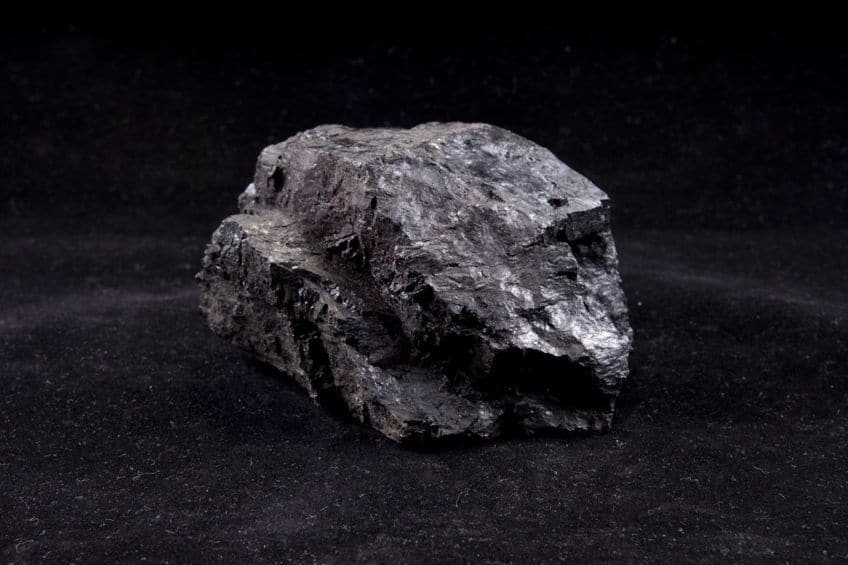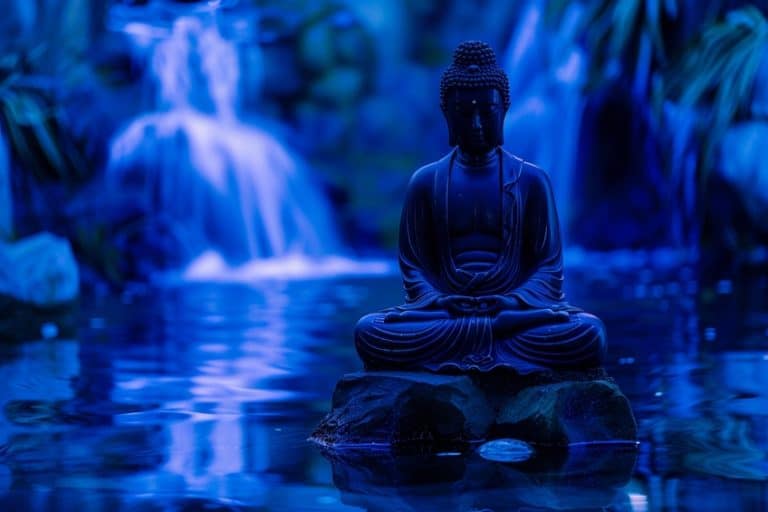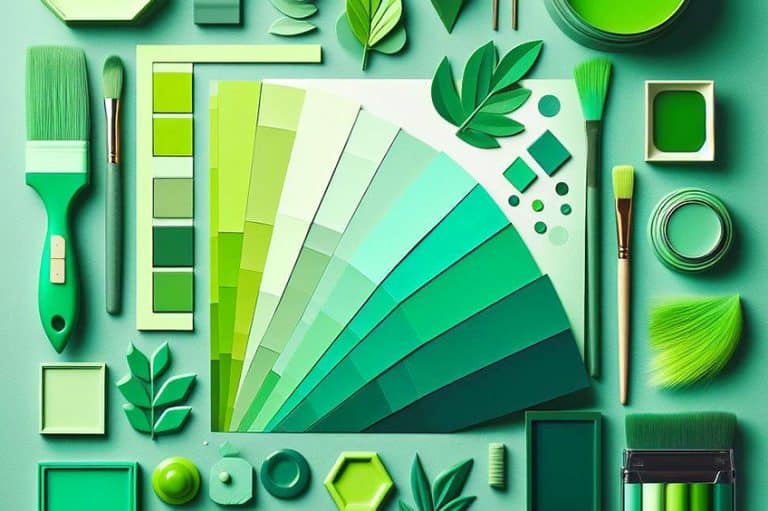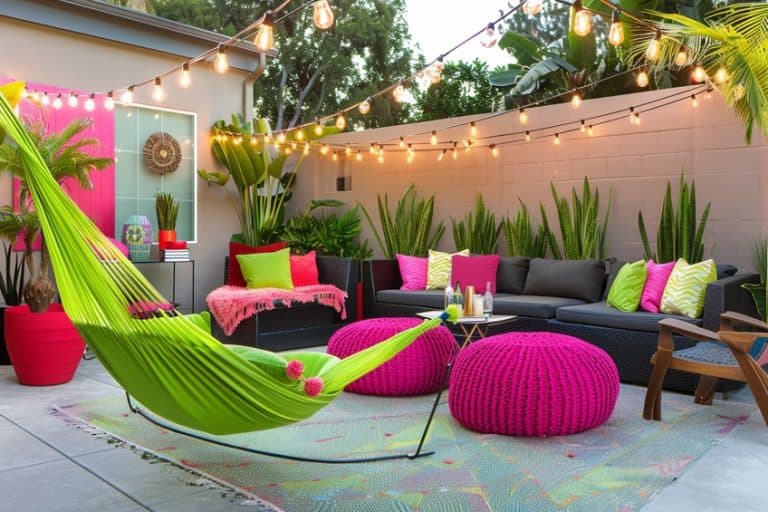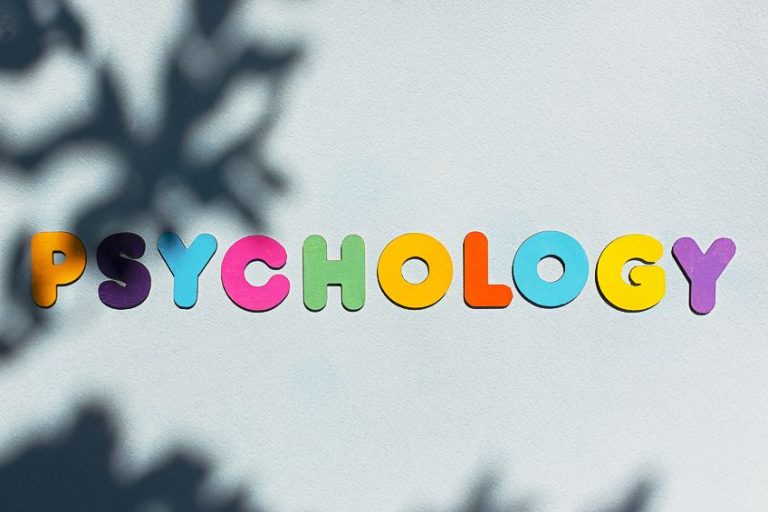Anthracite Color – The Difference Between Anthracite vs. Black
There are so many different colors out there; some we all recognize and others we do not know even existed! Maybe you have heard of anthracite, but what color is anthracite and how can you use it in home designs? To make things easier, we have done a little research and found some of these answers for you.
Table of Contents
What Color Is Anthracite?
If you have heard of anthracite, then you know that it is a type of coal. This is where the color name originated. When looking at anthracite, you will notice it has a submetallic luster, which is what prevents it from looking completely black. You can describe the anthracite color as being a dark shade of gray.
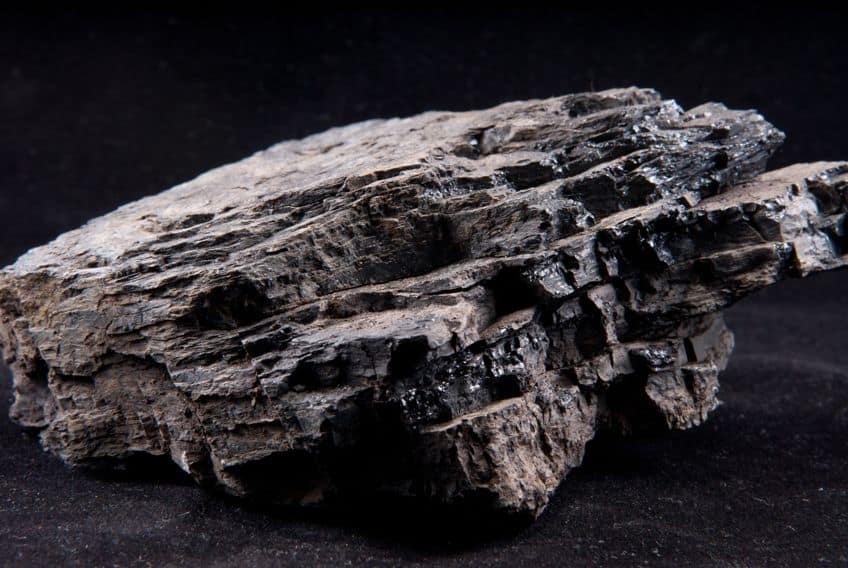
When you are considering anthracite vs. black, anthracite is very close to black but it does not quite reach a complete black color. This is because anthracite is softer and slightly lighter than black, and it does not appear as severe as black. The anthracite gray color is a deep darkish gray that also has cool undertones of blue and purple, which gives it a slight edge over other types of gray.
| Shade | Hex Code | CMYK Color Code (%) | RGB Color Code | Color |
| Anthracite | #393d47 | 20, 14, 0, 72 | 57, 61, 71 | |
| Black | #000000 | 0, 0, 0, 100 | 0, 0, 0 |
Anthracite Color: A Brief History
Anthracite is a hard coal that has a slight gloss to its surface, which makes it look darkish gray, with a bluish tinge. The substance has a high carbon content and has only a few impurities. Anthracite is also one of the higher-ranking coals and is mined in only a handful of countries around the world. The coal is difficult to ignite and then burns with a smokeless, blue flame and is used in thermal power stations to help generate electricity.
The word anthracite originates from the Greek language and is derived from the Greek word anthrakítēs, which means “coal-like”.
Many also refer to anthracite as hard coal, black coal, stone coal, and coffee coal, amongst others. Because anthracite is smokeless when it burns, it was used during the American Civil War by Confederate blockade runners. The anthracite was used for the boilers, without giving away their location.
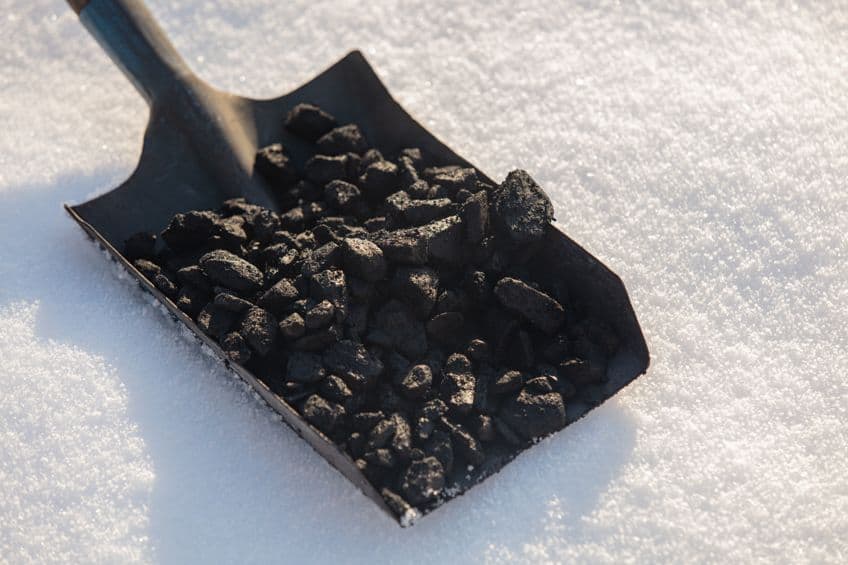
Anthracite was also a popular heating source in American homes from the late 19th century through to the 1950s. In the 1980s, many schools and other public buildings used furnaces that used anthracite for heating. This was later changed to oil-burning systems and natural gas approaches. Today, anthracite is quite expensive and is mostly used for domestic purposes. The color, however, has gained popularity in the home design industry. The darkish anthracite gray offers a dramatic look, without being too intense and overwhelming.
Anthracite Color Meaning
Since anthracite is dark gray, it has a similar meaning to that of all gray colors. Gray is seen as a neutral color that is associated with wisdom and intelligence. The color, being between black and white, also represents balance. Gray is a color that can appear serious and formal. The various gray shades can also be conservative, but stylish and sophisticated. Gray can also evoke feelings of mystery. Dark grays, like anthracite, are seen more as a masculine color.
However, gray also has a few negative associations and can be seen as depressing. Dark grays are also associated with suppression, control, and inflexibility.
The absence of vibrant colors can make gray appear dull and lifeless, which is why it is often paired with brighter colors. Anthracite is a dark gray color, but it does have a warm undertone that can help to make a space feel calm. Anthracite gray can also help to improve concentration, so is a great color to add to working spaces and is a popular color in urban areas.
Shades of Anthracite
Anthracite is a dark shade of gray, but you can choose from many other different tones. In general, gray is quite a popular neutral color, and even though gray is not seen as a color, many of the various shades do have warm or cool undertones. Each color has a particular hex code you can use to find it online and various color codes to go with it. Some colors that are similar to anthracite include the following.
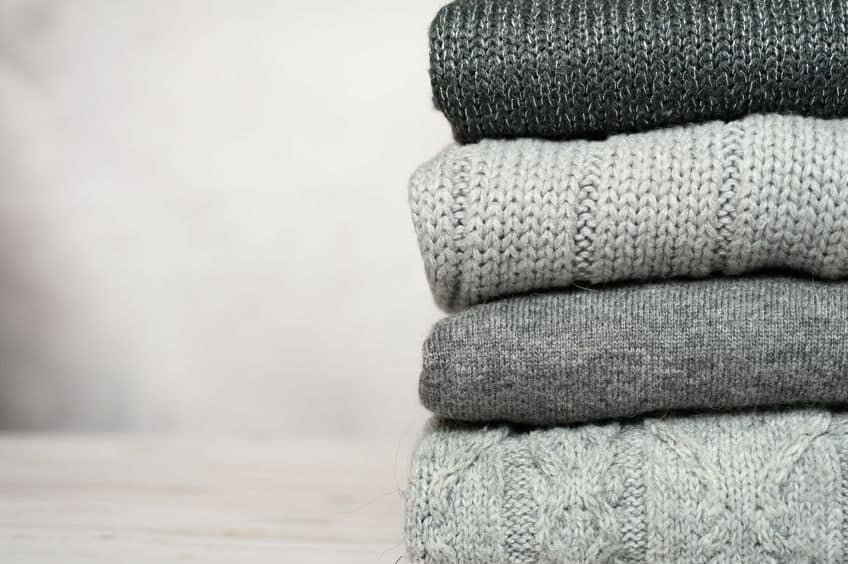
Charcoal Gray
This is a very dark gray color, with a bluish undertone that might be more familiar than anthracite. The name originated from charred pieces of burned wood. This is a wonderfully versatile shade of gray that has endless uses.
Like all darker gray colors, it can help to tone down a brighter color scheme.
| Shade | Hex Code | CMYK Color Code (%) | RGB Color Code | Color |
| Anthracite | #393d47 | 20, 14, 0, 72 | 57, 61, 71 | |
| Charcoal Gray | #36454f | 32, 13, 0, 69 | 54, 69, 79 |
Antique Gray
This shade of gray can be described as a dark grayish magenta. When using such gray colors, it is important to pair them correctly. This is a warm tone of gray and works better with other warm tones.
| Shade | Hex Code | CMYK Color Code (%) | RGB Color Code | Color |
| Anthracite | #393d47 | 20, 14, 0, 72 | 57, 61, 71 | |
| Antique Gray | #69576d | 4, 20, 0, 57 | 105, 87, 109 |
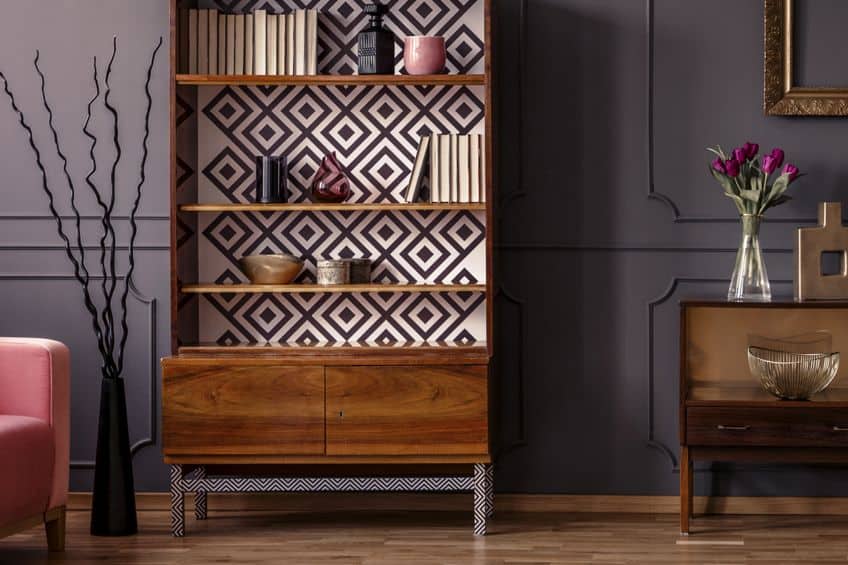
Ash Gray
We are all familiar with ash after a fire has burned out. You can describe the color as a pale gray, which is similar to ash. This particular web ash gray also has a greenish undertone, making it a cool shade of gray. There are many animals with this color name, for example, the ash-gray leaf bug.
Ash gray is also a very popular hair color.
| Shade | Hex Code | CMYK Color Code (%) | RGB Color Code | Color |
| Anthracite | #393d47 | 20, 14, 0, 72 | 57, 61, 71 | |
| Ash Gray | #b2beb5 | 6, 0, 5, 25 | 178, 190, 181 |
Aluminum
Aluminum, a silvery-white metal can be compared to silver, as both have that silvery reflective quality. The web color in the table provided can be defined as a light grayish-lime green. Again, the green undertone makes this a cool shade of gray.
| Shade | Hex Code | CMYK Color Code (%) | RGB Color Code | Color |
| Anthracite | #393d47 | 20, 14, 0, 72 | 57, 61, 71 | |
| Aluminum | #d9dad9 | 0, 0, 0, 15 | 217, 218, 217 |

Chrome
This web color can be described as a light grayish blue and gets its name from the steel gray metal. The metal is often used on taps and other fittings that provide a sparkly blue tint that does not fade.
Both the anthracite and chrome colors go quite well when used together.
| Shade | Hex Code | CMYK Color Code (%) | RGB Color Code | Color |
| Anthracite | #393d47 | 20, 14, 0, 72 | 57, 61, 71 | |
| Chrome | #dbe2e9 | 6, 3, 0, 9 | 219, 226, 233 |
Anthracite Color Combinations
In general, gray is considered a neutral color, which makes it quite a versatile hue. So, white, and other neutral colors like black, brown, and cream will naturally work well with this particular shade of gray. However, the anthracite color will also go with many other brighter and bold colors. To determine what colors go with anthracite best, you can turn to color theory, where you will find the most popular color combinations.
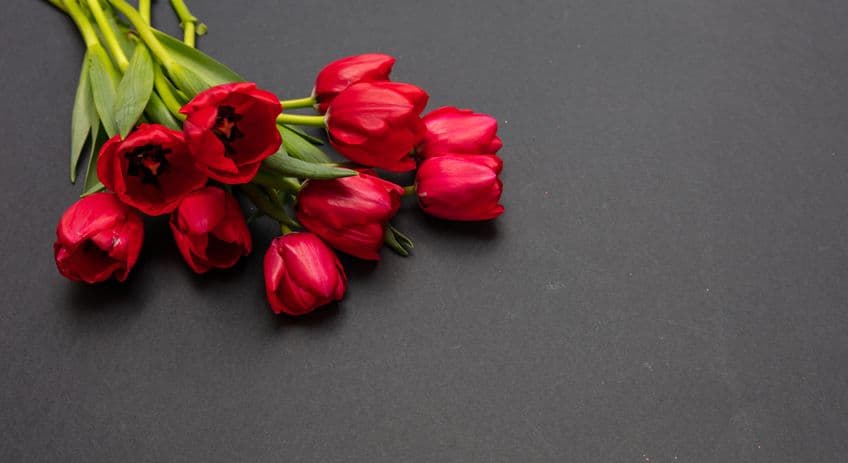
Complementary Anthracite Colors
Colors on the color wheel that are on opposite sides complement each other. When using these colors, it will help a design stand out. This means the colors are contrasting. Gray is also technically not a color, but the undertone determines how a combination is selected.
In this case, the blue undertone will contrast with a dark gray that has an orange undertone.
However, this combination can be too dark, so why not choose other shades of orange like burnt orange or even yellow or cream? The darker gray will help to soften the brighter orange color.
| Shade | Hex Code | CMYK Color Code (%) | RGB Color Code | Color |
| Anthracite | #393d47 | 20, 14, 0, 72 | 57, 61, 71 | |
| Dark Grayish Orange | #474339 | 0, 6, 20, 72 | 71, 67, 57 | |
| Burnt Orange | #cc5500 | 0, 58, 100, 20 | 204, 85, 0 | |
| Cream | #fffdd0 | 0, 1, 18, 0 | 255, 253, 208 |
Analogous Anthracite Colors
Colors that are all in the same area on the color wheel, or colors that are next to each other, are considered analogous. So, if you take blue, it will be other shades of blue and also shades of green. This color combination is a little more constant and does not drastically change or stand out as much as complementary colors. Consider shades of green like mint green or other shades of blue like navy or lighter blues.
| Shade | Hex Code | CMYK Color Code (%) | RGB Color Code | Color |
| Anthracite | #393d47 | 20, 14, 0, 72 | 57, 61, 71 | |
| Dark Grayish Cyan | #394447 | 20, 4, 0, 72 | 57, 68, 71 | |
| Dark Grayish Blue | #3c3947 | 15, 20, 0, 72 | 60, 57, 71 | |
| Mint Green | #3eb489 | 66, 0, 24, 29 | 62, 180, 137 | |
| Navy | #000080 | 100, 100, 0, 50 | 0, 0, 128 | |
| Light Blue | #add8e6 | 25, 6, 0, 10 | 173, 216, 230 |
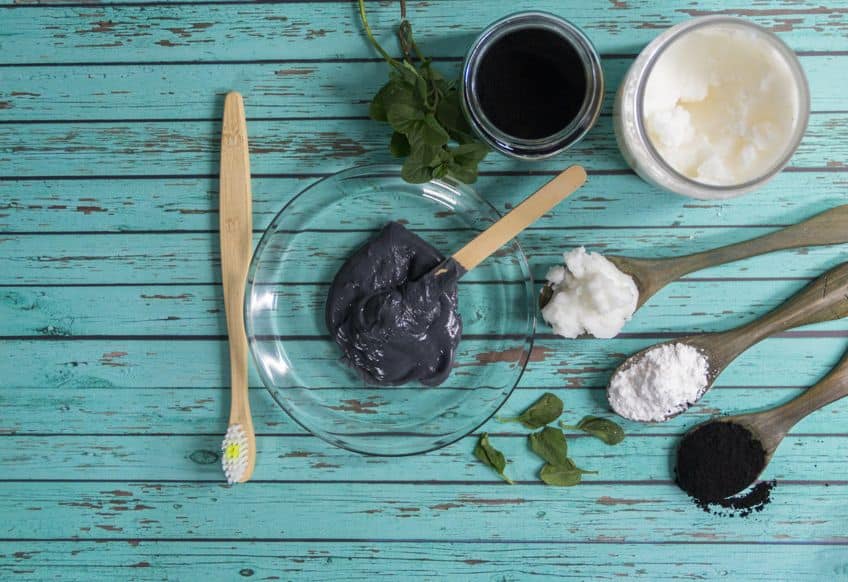
Triadic Anthracite Colors
Triadic colors can help to create a color palette that is balanced but also has pops of color. Three colors are used, which include your main choice, and another two colors that play more secondary roles as accent colors. If you search for this color combination online, you will find that it forms a triangle outline that places all the colors at an equal distance from each other.
You can also consider other shades of green like teal or shades of pink like rose gold.
| Shade | Hex Code | CMYK Color Code (%) | RGB Color Code | Color |
| Anthracite | #393d47 | 20, 14, 0, 72 | 57, 61, 71 | |
| Dark Grayish Green | #3d4739 | 14, 0, 20, 72 | 61, 71, 57 | |
| Dark Grayish Pink | #47393d | 0, 20, 14, 72 | 71, 57, 61 | |
| Teal | #008080 | 100, 0, 0, 50 | 0, 128, 128 | |
| Rose Gold | #b76e79 | 0, 40, 34, 28 | 183, 110, 121 |
Monochromatic Anthracite Colors
If you want to have a color palette that is a continual graduation of the same color, then monochromatic is the way to go. Not only is this combination easy on the eyes, but ensuring the colors match is not a problem. You can choose colors that are almost black to extremely light tones.
| Shade | Hex Code | CMYK Color Code (%) | RGB Color Code | Color |
| Anthracite | #393d47 | 20, 14, 0, 72 | 57, 61, 71 | |
| Very Dark Blue | #0d0e11 | 24, 18, 0, 93 | 13, 14, 17 | |
| Light Grayish Blue | #d9dbe1 | 4, 3, 0, 12 | 217, 219, 225 |
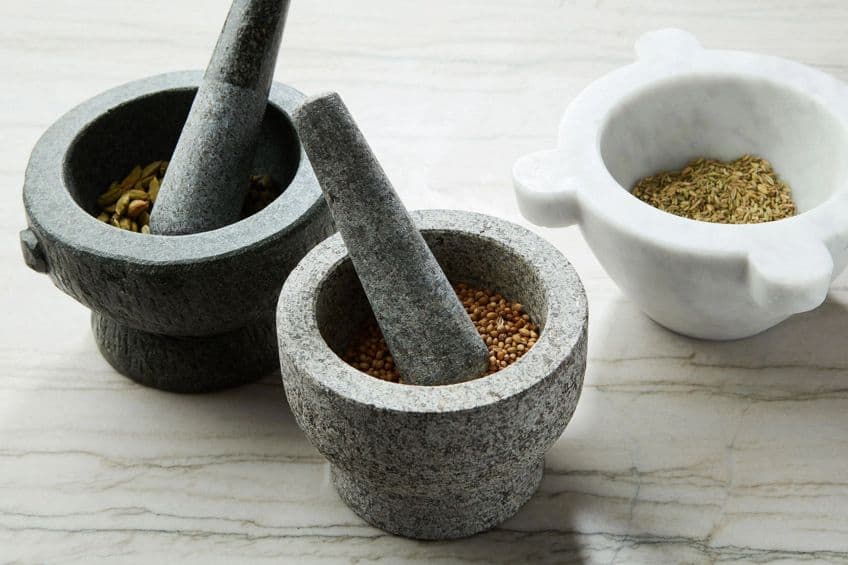
What Colors Make Anthracite Acrylic Paint?
Gray, as we have mentioned, is not technically a color, and is a simple mixture of various proportions of black and white. However, you do get different tones and shades of gray. To mix gray, you simply blend white and black paint. Lighter grays have less black and more white, while darker grays will have more black than white.
However, you can make things more challenging and create shades of gray that are all different.
Understanding how to mix colors is important in this step, so make sure to go over some color theory before you start. As you experiment with mixing paints, also make sure to keep a color chart with all the colors and proportions used.
Another option would then be to mix gray using complementary colors. For example, blue mixed with orange. When doing this, each color tones the other color down and this will create a dark, almost blackish hue. Depending on what paint colors you decide to use, you can create various shades of gray. To get something close to anthracite, try using burnt umber, ultramarine, and white.
| Shade | Hex Code | CMYK Color Code (%) | RGB Color Code | Color |
| Burnt Umber | #8a3324 | 0, 63, 74, 46 | 138, 51, 36 | |
| Ultramarine | #120a8f | 87, 93, 0, 44 | 18, 10, 143 |
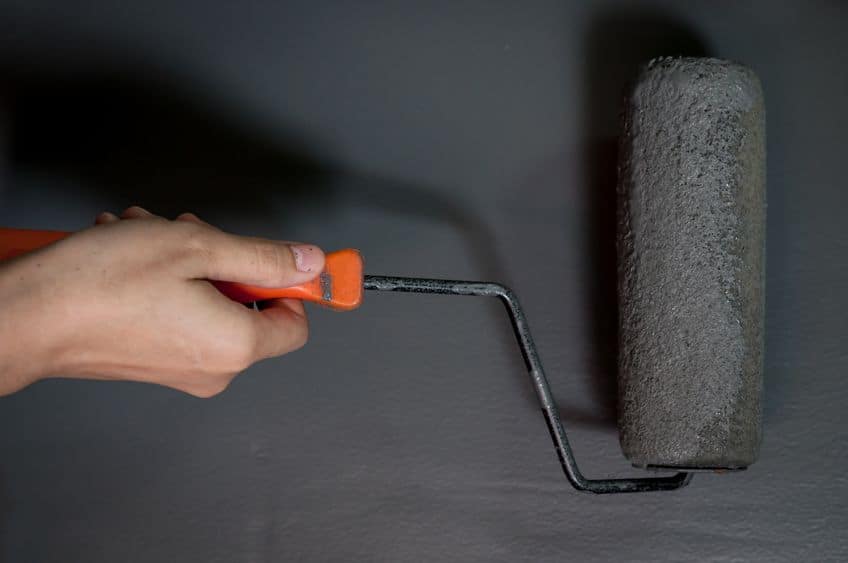
Mix similar proportions of the burnt umber and ultramarine blue, which should produce a darker color. Since anthracite is only slightly less dark than black itself, only add in an extremely small amount of white only if needed to get a lighter gray version. Otherwise, it should create a very dark bluish-gray.
Anthracite Color Design Ideas
The anthracite color can be used in graphic designs to create a sophisticated and more versatile look, as the darkish gray provides more possibilities to use with other bolder colors. Charcoal gray is more popular in the fashion industry, while anthracite is a lesser-known color.
However, the anthracite color is very well-known in the home improvement sector. This color has become quite popular for both exterior and interior designs.
The color provides a beautiful design for outside roof tiles, garage doors, gutter, window trims, and fences. It pairs wonderfully with steel, wood, and concrete, and can work with any type of design from classical looks to industrial houses. The anthracite colors offer a great background for bolder colors and can seamlessly work with white for a more minimalistic look.
Living Areas
Anthracite gray can add great dimension and depth to a larger room. However, an accent wall can add just the right amount of drama to a space that has a neutral color palette. The wall will also be a great focal point. You can also bring in a dark gray sofa, which will stand out in a modern living room.
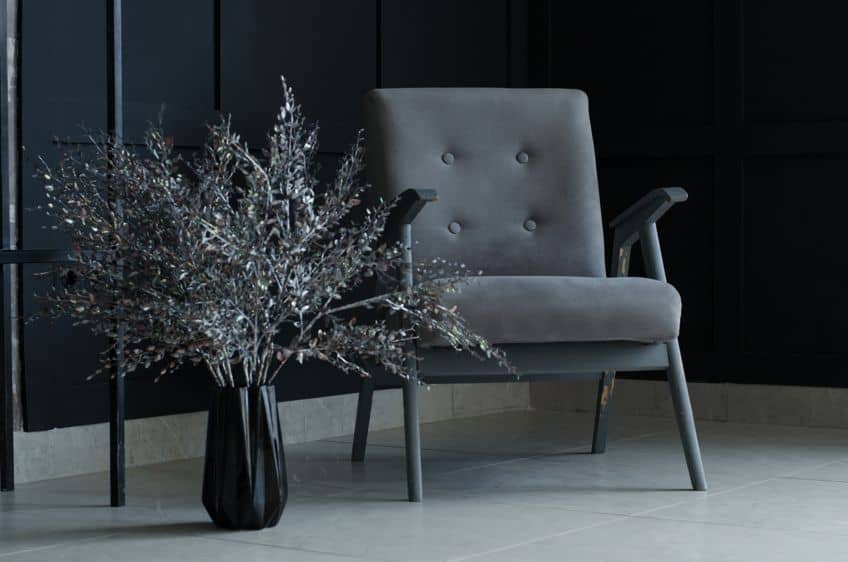
The color can also complement a variety of other brighter accent colors. You can also bring in the color through various accessories, for example, drapes, cushions, throws, lampstands, and rugs. Simply paint the room trim at the bottom of a wall. Even this small addition can add to the room’s atmosphere.
Kitchens
The dark gray can add a certain sophistication and sleek look to the kitchen area. Consider anthracite gray cabinets, along with light shades of gray on the walls. Also, gray, and white counter marble tops, and lighter wood flooring, can all create the perfect kitchen look. Steel fridge doors and other silver elements can also help to improve the sleek look.
Bring in pops of color through things like bowls, kitchen towels, kettles, and other items.
Bedrooms and Bathrooms
Bedrooms and bathrooms can also use dark gray tones. The anthracite gray might be a better choice for you, instead of intense black. There are a lot more options for anthracite, as it is softer than black and not as overpowering. Anthracites can be calming when used in a neutral color palette. You can easily incorporate it in small doses, for example, throws, pillows, or a patterned rug. For the bathroom, anthracite can create more of a modern look. Combining dark gray with white or other light colors can also create an illusion of a larger space. Think of dark gray cabinets and other bathroom fixtures, or tiles.
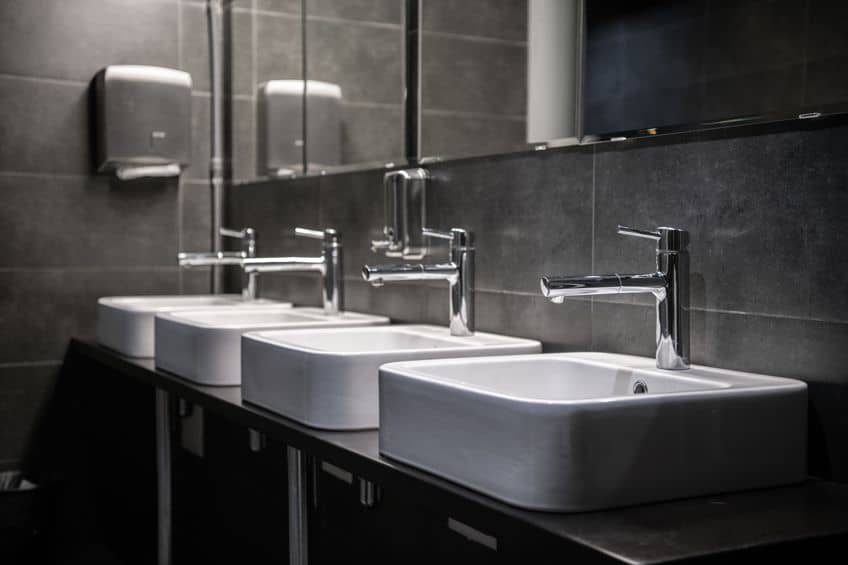
If you are looking for a dark and intense color that adds drama, but want to avoid black, anthracite is the next best choice! It can be paired with numerous other colors and can easily be incorporated into modern spaces. Anthracite gray is also versatile and can be applied to both interior as well as exterior home designs.
Frequently Asked Questions
What Color Is Anthracite?
When thinking of gray, you do not necessarily consider it a color. However, there are many different types of gray. So, what colors make anthracite? You can say that anthracite is a very dark gray that also has bluish or even purplish undertones.
Is There a Difference Between Anthracite and Black?
Even though black and anthracite resemble each other, when it comes to anthracite vs. black, anthracite is less intense. It is more of a darkish-gray shade that is lighter than black, and has more of a natural and softer look.
Is the Anthracite Color Cool or Warm?
Anthracite gray can have bluish and purple undertones, so this means it has a cool bias. So, anthracite is a cool color that can help to create a modern and stylish look for your home décor.
In 2005, Charlene completed her Wellness Diplomas in Therapeutic Aromatherapy and Reflexology from the International School of Reflexology and Meridian Therapy. She worked for a company offering corporate wellness programs for a couple of years, before opening up her own therapy practice. It was in 2015 that a friend, who was a digital marketer, asked her to join her company as a content creator, and this is where she found her excitement for writing.
Since joining the content writing world, she has gained a lot of experience over the years writing on a diverse selection of topics, from beauty, health, wellness, travel, and more. Due to various circumstances, she had to close her therapy practice and is now a full-time freelance writer. Being a creative person, she could not pass up the opportunity to contribute to the Art in Context team, where is was in her element, writing about a variety of art and craft topics. Contributing articles for over three years now, her knowledge in this area has grown, and she has gotten to explore her creativity and improve her research and writing skills.
Charlene Lewis has been working for artincontext.org since the relaunch in 2020. She is an experienced writer and mainly focuses on the topics of color theory, painting and drawing.
Learn more about Charlene Lewis and the Art in Context Team.
Cite this Article
Charlene, Lewis, “Anthracite Color – The Difference Between Anthracite vs. Black.” Art in Context. March 7, 2023. URL: https://artincontext.org/anthracite-color/
Lewis, C. (2023, 7 March). Anthracite Color – The Difference Between Anthracite vs. Black. Art in Context. https://artincontext.org/anthracite-color/
Lewis, Charlene. “Anthracite Color – The Difference Between Anthracite vs. Black.” Art in Context, March 7, 2023. https://artincontext.org/anthracite-color/.


